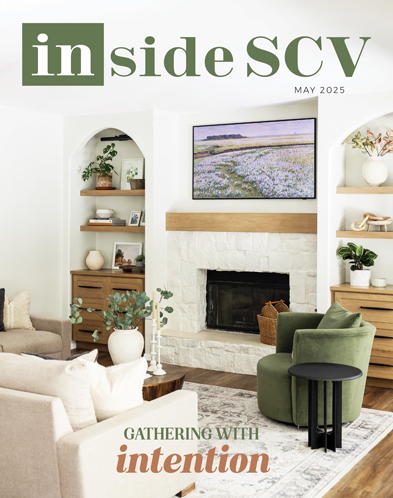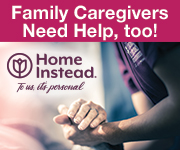HEALTH - FOCUS ON YOUR HEALTH
Broken Bones, Broken Spirits
May is Osteoporosis Awareness Month
May, 2006 - Issue #19
"Not something I need to worry about." That was my reaction to the threat of osteoporosis. My grandmother has it, but she's old. I have a long way to go before I need to worry. But now my mother has it and she's not quite so old. In fact, she's only 20 years older than my sister.
The thing that really began to wake me up me was when I considered how different my grandmother and mother's lives were from mine. My grandmother worked - as a child. There were the four younger brothers, the farm and the cow and of course the cow provided fresh milk and lots of it. There was laundry to be done by hand. There were the long excursions looking for berries in the forest. She worked hard. She used her body. My mother used her body less than her mother and I used mine less than she. So, as my very un-mathematically inclined brain put two and two together I came up with the fact that I may be at even a higher risk than they were. The scary part? I have worked with a lot of women with osteoporosis. It changes the way they see their world - dramatically.
The fear accompanied with osteoporosis was a big surprise to me. It is a painless, silent disease - until a bone breaks. Healing that bone is very difficult; it often will not heal completely. The break is accompanied by acute and probably later, chronic pain. Women and men with osteoporosis know this whether they have broken a bone or not. They fear falling more than anything and as is usual with more mature age, their balance is very poor. The two together incapacitate many people.
What they don't know is that it isn't just falling that they should fear. They should be changing their everyday activities to reduce risk of spinal fracture. For example, twisting to reach for something behind one's self can very easily create a fracture. So can lifting a heavy weight the wrong way, like a grandchild for instance.
A fall or a fracture for someone with osteoporosis can be the difference between living independently and living in a nursing home. My grandmother's fear of falling is what makes her use her walker although she really doesn't look like she needs it.
Typically, there is a three-part program for osteoporosis: a program that helps to reduce the fear of breaking a bone, and exercise, medication and supplements.
The most important thing that exercise offers the osteoporotic person is confidence. The risk of falling decreases as a sense of balance and control increases. The change in self-assurance is very dramatic as they prove to themselves that if they slip a little bit a fall is not inevitable. Exercise can increase bone density but not as effectively once an individual already has osteoporosis. I have seen women turn their osteoporosis into osteopoenia (low bone density but not as low as osteoporosis) and I have seen osteopoenia improved to normal bone density. It is very possible with dedication.
The latest on calcium and vitamin D supplements is not very positive, sadly. The New England Journal of Medicine, February 16, 2006, reported that these supplements do not prevent bone fracture and may increase the risk of kidney stones among mature women. Dr. Clifford Rosen of the Maine Center for Osteoporosis Research and Education stated, "We've been recommending it for everyone but it probably doesn't work in the majority of people or the effect is small. And there is an increase in kidney stones. It is not a benign intervention." Women have false believed that supplements and not a calcium-rich diet was enough, so toss the pills and pick up a glass. Don't like milk? Did you know that calcium is also found in greens, broccoli, sardines, canned salmon with bones, dried beans and peas, and tofu?
In closing, the best prescription is prevention. The idea is to create a bone bank account. When women go through menopause and men reach their 70s, there is an inevitable amount of bone loss. The more bone density that exists before this time in our lives the more likely that the bone loss will not affect us negatively. Build bone density with an active lifestyle and healthy diet.
Karena Lineback is the author of "OsteoPilates: Reduce Risk, Increase Bone Density, Look and Feel Great," contributing author to "Cancer Wellness" (Medical Health and Fitness, 2005) and the president of Pilates Teck, Inc.
The thing that really began to wake me up me was when I considered how different my grandmother and mother's lives were from mine. My grandmother worked - as a child. There were the four younger brothers, the farm and the cow and of course the cow provided fresh milk and lots of it. There was laundry to be done by hand. There were the long excursions looking for berries in the forest. She worked hard. She used her body. My mother used her body less than her mother and I used mine less than she. So, as my very un-mathematically inclined brain put two and two together I came up with the fact that I may be at even a higher risk than they were. The scary part? I have worked with a lot of women with osteoporosis. It changes the way they see their world - dramatically.
| One out of every two women and one in four men over 50 will have an osteoporosis-related fracture in their lifetime. |
What they don't know is that it isn't just falling that they should fear. They should be changing their everyday activities to reduce risk of spinal fracture. For example, twisting to reach for something behind one's self can very easily create a fracture. So can lifting a heavy weight the wrong way, like a grandchild for instance.
A fall or a fracture for someone with osteoporosis can be the difference between living independently and living in a nursing home. My grandmother's fear of falling is what makes her use her walker although she really doesn't look like she needs it.
Typically, there is a three-part program for osteoporosis: a program that helps to reduce the fear of breaking a bone, and exercise, medication and supplements.
The most important thing that exercise offers the osteoporotic person is confidence. The risk of falling decreases as a sense of balance and control increases. The change in self-assurance is very dramatic as they prove to themselves that if they slip a little bit a fall is not inevitable. Exercise can increase bone density but not as effectively once an individual already has osteoporosis. I have seen women turn their osteoporosis into osteopoenia (low bone density but not as low as osteoporosis) and I have seen osteopoenia improved to normal bone density. It is very possible with dedication.
The latest on calcium and vitamin D supplements is not very positive, sadly. The New England Journal of Medicine, February 16, 2006, reported that these supplements do not prevent bone fracture and may increase the risk of kidney stones among mature women. Dr. Clifford Rosen of the Maine Center for Osteoporosis Research and Education stated, "We've been recommending it for everyone but it probably doesn't work in the majority of people or the effect is small. And there is an increase in kidney stones. It is not a benign intervention." Women have false believed that supplements and not a calcium-rich diet was enough, so toss the pills and pick up a glass. Don't like milk? Did you know that calcium is also found in greens, broccoli, sardines, canned salmon with bones, dried beans and peas, and tofu?
In closing, the best prescription is prevention. The idea is to create a bone bank account. When women go through menopause and men reach their 70s, there is an inevitable amount of bone loss. The more bone density that exists before this time in our lives the more likely that the bone loss will not affect us negatively. Build bone density with an active lifestyle and healthy diet.
--------------------------------------------------------------
Karena Lineback is the author of "OsteoPilates: Reduce Risk, Increase Bone Density, Look and Feel Great," contributing author to "Cancer Wellness" (Medical Health and Fitness, 2005) and the president of Pilates Teck, Inc.
|
||||||||||||||||||||||||||||




